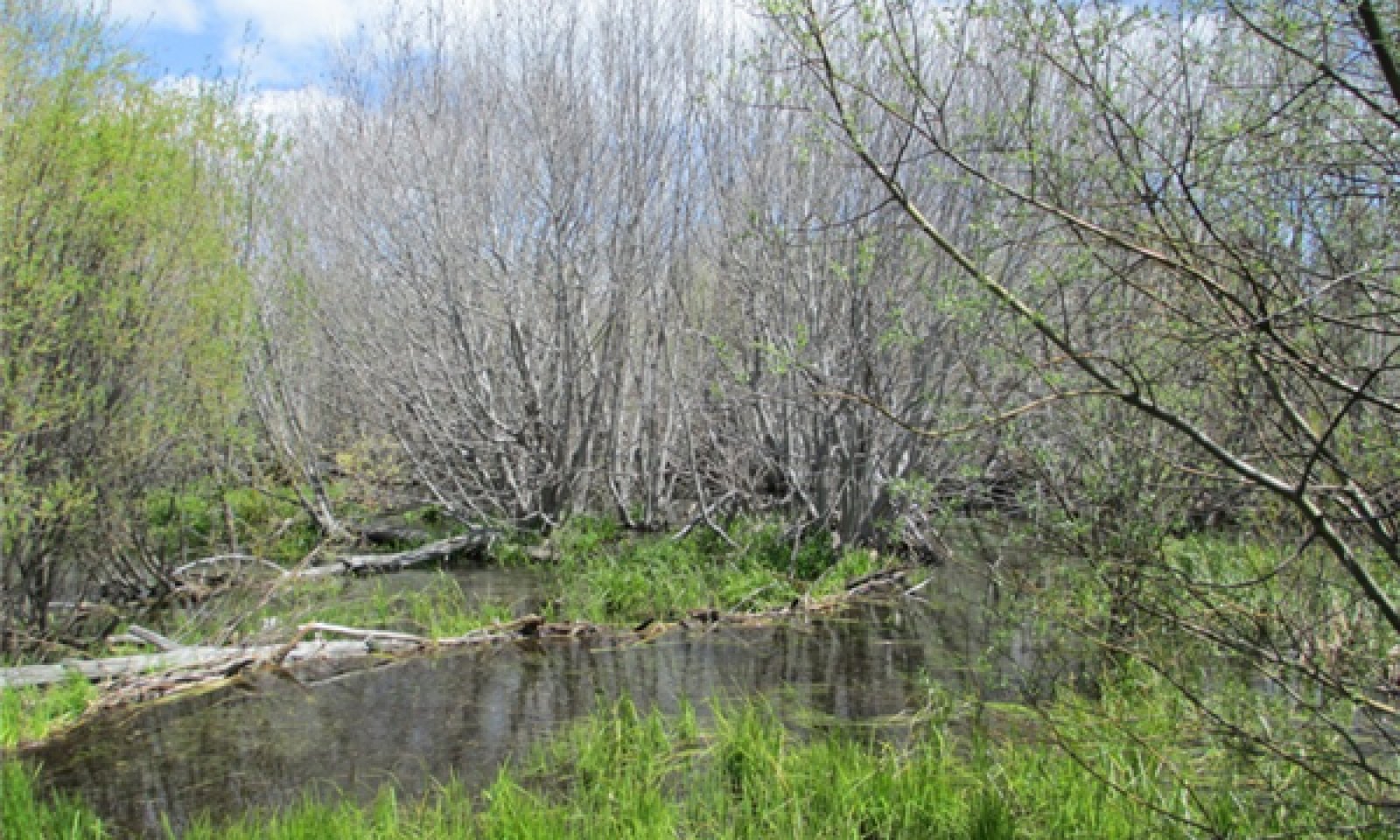
Frigid Anastomosed System
Scenario model
Current ecosystem state
Select a state
Management practices/drivers
Select a transition or restoration pathway
- Transition 1A More details
- Restoration pathway 2a More details
- Transition 2a More details
- Restoration pathway 3a More details
-
No transition or restoration pathway between the selected states has been described
Target ecosystem state
Select a state
Description
This state is the representative state for this ecological site. It is a Rosgen Da channel type, highly influenced by beaver activity.
Submodel
Description
When these streams are straightened or confined, velocity and erosive power increase. These streams then head cut or down cut to form an entrenched low gradient “G” type channel. The unstable banks of the “G” type channel erode rapidly into a wider and shallower entrenched “F” type channel.
Submodel
Description
A “C” type channel is slightly entrenched, with moderate to wide width to depth ratios, and moderate to high sinuosity. Since, these channels are less entrenched than the F channel, bank erosion is less severe, and vegetation can establish on the floodplains and banks, creating more stability. This state may coexists within reaches of state 2 as it develops.
Submodel
Mechanism
Transition to State 2 occurs with the channelization, straightening or confinement of the stream channel, removal or absence of beavers, or blowout of a beaver dam. The alteration causes the channel to become unstable as the concentration or change in water course causes bank erosion and channel bottom incision. The lowering of the water table causes a decline in wetland obligate species, and loss of vegetative structure along the banks, causing further bank instability. Past influences such as logging and grazing may have caused this transition in some areas. Since this system has braided channels, it is possible that a given meadow may have channels that exhibit both State 1 and State 2 channel types.
Mechanism
The Tahoe Conservancy and other agencies have developed and environment impact report for the Upper Truckee River and Marsh Restoration Project. The plans include several alternatives, but all of them focus on increasing the stream meander, and raising the elevation of the channel bed to increase flooding frequency on the original floodplain (AECOM and ENTRIX 2013).
Mechanism
This transition occurs when the stream has reached a relative equilibrium by eroding the banks to a sufficient width to contain regular flows. The bank full flows now erode a new channel deeper within wide F channel, creating a new, slightly-entrenched, C channel with a new floodplain.
Mechanism
The Tahoe Conservancy and other agencies have developed and environment impact report for the Upper Truckee River and Marsh Restoration Project. The plans include several alternatives, but all of them focus on increasing the stream meander, and raising the elevation of the channel bed to increase flooding frequency on the original floodplain (AECOM and ENTRIX 2013).
Model keys
Briefcase
Add ecological sites and Major Land Resource Areas to your briefcase by clicking on the briefcase (![]() ) icon wherever it occurs. Drag and drop items to reorder. Cookies are used to store briefcase items between browsing sessions. Because of this, the number of items that can be added to your briefcase is limited, and briefcase items added on one device and browser cannot be accessed from another device or browser. Users who do not wish to place cookies on their devices should not use the briefcase tool. Briefcase cookies serve no other purpose than described here and are deleted whenever browsing history is cleared.
) icon wherever it occurs. Drag and drop items to reorder. Cookies are used to store briefcase items between browsing sessions. Because of this, the number of items that can be added to your briefcase is limited, and briefcase items added on one device and browser cannot be accessed from another device or browser. Users who do not wish to place cookies on their devices should not use the briefcase tool. Briefcase cookies serve no other purpose than described here and are deleted whenever browsing history is cleared.
Ecological sites
Major Land Resource Areas
The Ecosystem Dynamics Interpretive Tool is an information system framework developed by the USDA-ARS Jornada Experimental Range, USDA Natural Resources Conservation Service, and New Mexico State University.








